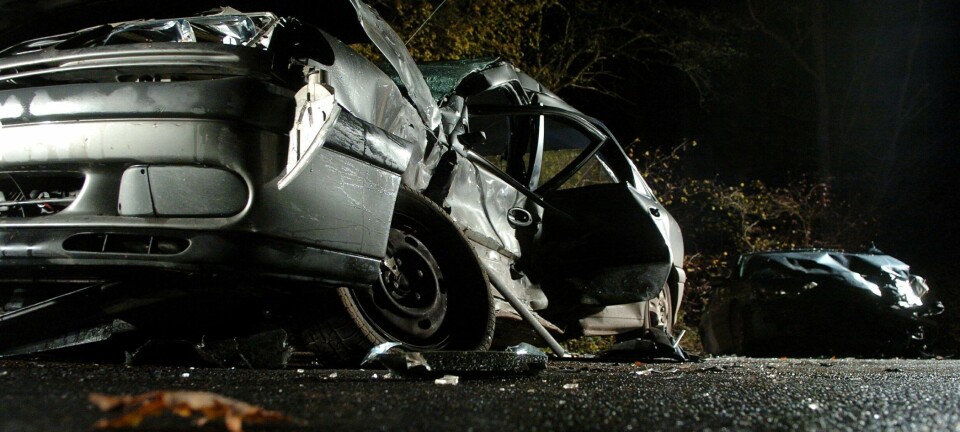
Lower speed limits save lives
Swedes lowered the speed limits on some of their worst roads. That same year, they saw fewer traffic fatalities.
Do general reductions in speed limits contribute to reductions of traffic fatalities? Some have said so, others have claimed the opposite.
A Swedish study indicates that slowing down traffic at least helps on some roads, even several years after speed limits sank. The results in that country have been 17 fewer deaths per year.
The biggest effect was seen on two-lane Swedish rural roads and on ones with unsatisfactory road sides where the speed was cut from 90 kilometres per hour to 80 km/h. An average of 14 lives per year has been saved on these roads alone.
Long-term effect
But the lowering of speed limits from 90 km/h to 70 km/h on three-lane roads failed to reduce traffic deaths.
The Swedish authorities lowered speeds predominantly on roads with low traffic safety records and poor road sides. It is uncertain whether a speed limit reduction on other roads would have the same consequences on traffic accident deaths.
The Swedish Transport Administration evaluated the roads they were responsible for in 2008/09 and lowered speed limits on some and raised them on others.
Researchers at the Swedish National Road and Traffic Research Institute have studied the effects of these changes up to 2013. They compared traffic accident statistics before and after the changes were made. In 2013, 260 persons died in traffic accidents in Sweden.
An array of factors have an impact on traffic safety, including the quality of cars on the road, weather conditions and a rise or fall in adherence to speed limits.
The researchers weeded out other factors than speed limits by comparing the statistics with equivalent roads which had not been given new speed limits.
No decline in serious injuries
New speed limits helped, although there is reason to believe that drivers didn’t reduce their velocities as much as they were supposed to. Previous speed controls have shown that drivers lower their speeds by only 2–3.5 km/h when asked to slow down by 10 km/h.
Oddly, there was no reduction in serious injuries. The researchers are scratching their heads on this one – why were there fewer fatalities but no reduction in serious injuries?
After this review of their roads, the Swedish Transport Administration raised speeds on roads that were found to have good safety standards. But injuries on freeways increased when speed limits were raised from 110 km/h to 120 km/h.
Yet there was no rise in fatalities on these motorways. The researchers think the reason could be that there are now so few fatal accidents on motorways that changes would not affect the analyses. The number of seriously injured increased on all types of motorways but the worst development was seen on narrow ones (21.5 metres wide).
Speed reductions are important
Traffic fatalities also dropped in Norway after authorities lowered speed limits from 80 to 70 km/h or from 90 to 80 km/h on particularly accident-prone stretches of road in 2001, even though motorists only lowered their speeds by 1.6–4 km/h.
This led to a 40 percent drop in fatal accidents, according to a report from the Norwegian Public Roads Administration. The numbers were adjusted to compensate for changes in the rest of the Norwegian road system.
The Norwegian authorities hope to get more drivers to respect speed limits. By 2018, the goal is to see 72 percent of vehicles adhering to the country’s speed limits. In 2014 only a little over half of vehicles on Norwegian roads stuck to speed limits.
“The gains from traffic safety are considerable if we succeed with speeds,” says Guro Ranes, a director at the Norwegian Public Roads Administration.
“Reduced speed has an effect on the risk of accidents, for instance when the road standard fails to support a high speed, as well as affecting the number of serious accidents, as lower speeds equate to less impact energy and thus less serious consequences,” she says.
The number of fatalities and serious injuries dropped by about half on roads where speed cameras were mounted from 2004 to 2010, according to a report from the Norwegian Centre for Transport Research.
Norwegian roads are seeing less carnage than before. Last year the number of fatalities totalled 147. Current figures from the Norwegian Public Roads Administration show that 53 persons lost their lives in the first half of 2015, which amounts to 22 less than in the same period last year. Most of these victims were men aged 45 and up.
--------------------------------------------
Read the Norwegian version of this article at forskning.no
Translated by: Glenn Ostling












